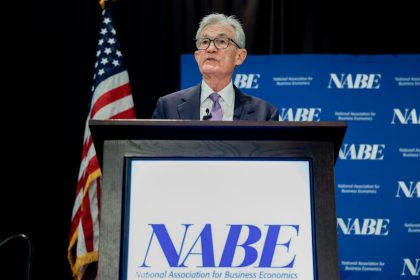As a publicly traded investment, bonds can fluctuate in value, becoming worth more or less over time. Although bond prices may vary, they are often constrained in how high they can rise. In general, bonds tend to be more stable over time than stocks, which can be highly volatile.
Here are the reasons bond prices fluctuate and what you need to know about investing in them.
What is a bond?
A bond is a contract in which one party agrees to pay a fixed rate of interest to another party over a certain period of time, in exchange for purchasing the bond. The bond’s issuer, usually a corporation or government, pays interest to the owner. When the bond matures at the end of the period, the issuer repays the face value of the bond, called the par value, to the bond’s owner.
A payment received by the owner of the bond is referred to as a coupon, and it remains fixed, except as otherwise stated in the bond agreement. If a bond issuer cannot pay its interest or repay the bond’s principal, then the issuer is in default. In this case the bond’s owner may have to take legal action to claim the money it is owed.
Most bonds provide fixed interest payments over the life of the bond, though some bonds are floating rate, meaning that the payment may fluctuate.
- In a fixed-rate bond, the payment remains steady over time. For example, if the bond pays 5 percent interest, then the owner will receive that payment each year, often in semiannual installments. This interest payment will not change.
- In a floating-rate bond, the interest payment fluctuates based on some predetermined criteria, often the level of prevailing interest rates.
New bonds are often issued with a term of at least several years, though they may be issued with a maturity decades away. For example, Treasury bonds from the U.S. government extend as far out as 30 years, while other Treasury securities may be issued for as little as four weeks.
If the bonds trade publicly, the price may fluctuate over the bond’s lifetime. On the other hand, savings bonds such as the Series I bond do not trade publicly, so their price does not change.
A bond that trades below its par value is called a discount bond, while one that trades above its par value is called a premium bond.
The commission to trade bonds can differ significantly among brokers, so if trading bonds is something you’ll do often, be sure to find the best online broker for it.
3 key reasons bond prices move up and down
There are three primary factors that drive movements in bond prices: the movement of prevailing interest rates, the ability of the issuer to meet the bond’s obligations and the decreasing time to the bond’s maturity.
1. Prevailing interest rates
Prevailing interest rates are the most important reason that bond prices change. A move in the direction of overall interest rates, such as the Federal Reserve’s decision to cut rates, will affect bond prices.
The price of bonds moves inversely to the direction of prevailing interest rates. If rates move higher, then bond prices move lower, all else equal. Conversely, if rates move lower, then bond prices move higher, all else equal. The rationale is simple to explain.
A bond with a fixed interest rate becomes less valuable when overall interest rates climb. Imagine a bond that pays 5 percent, but the economic climate means that the same issuer would now be forced to pay 7 percent to issue the same type of bond. Investors prefer the higher-yielding bond and therefore push down the value of the lower-yielding bond so that its yield to maturity is more comparable to the newly issued, higher-yielding bond. This volatility is one reason CDs may be a better option than bonds for some investors.
Rising rates in 2022 were a big contributing factor to the failures of some high-profile banks. Many banks own Treasury bonds for their safety, but when rates rose, the value of their bond holdings fell. If its bonds decline enough, the bank may have to raise fresh capital.
Of course, the reverse happens when prevailing interest rates fall. The higher-yielding bond becomes more valuable than newly issued bonds with a lower coupon.
However, if a bond offers a floating-rate coupon that is geared to prevailing interest rates, its price may stay flat or even rise when rates rise. The price change depends on how much the floating rate adjusts to changes in the prevailing rate and for how long. Of course, the floating rate may actually reduce the bond’s payout, too, so the bond price could fall.
The effect of interest rates on bond prices is more pronounced in longer-maturity bonds than in shorter-term ones. Rising interest rates have almost no effect on bonds that are set to mature in a year or less, while they can really hurt the price of bonds that mature in 30 years, for example.
2. The issuer’s financial stability
Bond prices move when investors perceive a change in the issuer’s ability to meet the bond’s obligations, or its credit quality deteriorates. Often this change occurs in a negative direction, meaning that investors analyze the bond’s issuer and determine that it cannot make interest payments and therefore must default. Investors push the bond’s price lower to account for the increased riskiness of the issuer and the likelihood that the issuer can repay only a portion of the bond. This risk leads many investors to turn to the highest-yielding FDIC-protected CDs.
Of course, if a previously distressed issuer regains its financial position or investors decide that it’s likely to meet its payment obligations, then the price of a discount bond may rise. The bond may trade back at its par value and even above it, depending on the prevailing interest rates.
Ratings agencies such as Standard & Poor’s and Moody’s regularly evaluate the debt ratings of issuers such as governments and companies based on their financial stability. They may then issue upgrades or downgrades to the organization’s credit rating that can raise or lower its cost of debt issuance, potentially affecting the prices of its outstanding bonds.
3. Decreasing time to maturity
Finally, the bond’s time to maturity also affects its price. At maturity bond owners receive their principal back, so bond prices converge toward par value as the bond approaches maturity.
For example, a discount bond will increase in price toward par value as it nears maturity, all else equal. Meanwhile, a premium bond will decrease in price toward par value as maturity nears. Then at maturity the owner receives the bond’s par value and any remaining interest payment.
The farther away maturity is, the less a bond’s price will move for every incremental reduction in time. For example, a discount bond with 10 years until maturity will not rise much over the next year, all else equal. In contrast, a bond with five years until maturity may move more over the next year, as it approaches maturity at a relatively quicker rate in terms of its remaining lifetime.
Of course, investors have other ways to make or lose money on bonds beyond just these three.
Bond prices are more predictable than stock prices
As discussed, the price of publicly traded bonds fluctuates for a few reasons, and the rationale for their price movements tends to be more obvious than the reasons that stocks move. While stock prices fluctuate over time due to the company’s profitability, they may move for many different reasons in the short term, including rapid changes in investor sentiment. In contrast, some of the biggest moves for bond prices can be determined based on basic mathematics.
While not purely predictable, bond prices tend to be more predictable than stock prices because their moves are more calculable based on the change in interest rates. If interest rates rise or fall, investors can quickly figure the theoretical new price of a bond with a simple calculation.
The calculation of bond prices due to the change in time to maturity can also be easily figured based on some relatively simple math, giving investors a clear idea of a bond’s expected price.
However, it’s a different situation when the financial stability of a company comes into question and investors must figure out the likelihood of the company being able to meet its obligations. Investors may push a bond lower due to their calculations as well as plain old-fashioned fear, though neither method ends up having the relatively mathematical precision of prior methods.
And if an issuer defaults, investors may then also try to determine the likelihood of recovering any or all of their principal from the issuer and the potential expected value of a distressed bond. So a distressed bond’s price may fluctuate based on the expected future recovery on the bond.
Rather than trying to figure out all these variables for individual companies, many investors simply turn to the best bond funds. Buying an exchange-traded fund (ETF) provides immediate diversification and reduced risk.
Bottom line
Bond prices can move for a few major reasons, but the main reason has to do with the direction of prevailing interest rates and how those rates make existing bonds more or less attractive. Of course, the bonds of an issuer in the throes of financial distress will move based on that specific circumstance rather than how prevailing interest rates are going at any given moment.
Read the full article here
















